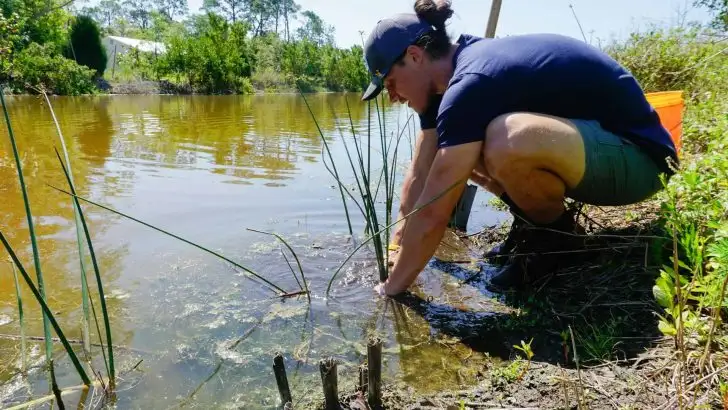People have always felt a deep connection to the water, recognizing it as one of the most beautiful natural elements. From lakes, rivers, to the stunning natural places, crystal-clear water can hide more than it reveals. Nature lovers and explorers are drawn to see amazing outdoor spots like secluded sinkholes or bustling lakeside trails, but beneath a more than inviting surface, water quality is the one that tells a deeper story.
This story is not about sightseeing, it’s about your health, the environment, and the future of these natural beauties.
Why Clean Water is More Than Just Visual Appeal
If you are not an expert in this field, then, like most travelers, you judge water by some simple indicators like water clarity or color. The bad news is that those are not solid indicators of safety. Usually, things that are potential dangers in water quality aren’t visible to the naked eye, like bacteria, industrial runoff, or heavy metals.
For example, the Santa Rosa Blue Hole is famous for its blue, clear water. That natural beauty attracts divers from around the country, but no one or very few people think about what it takes to keep that beautiful spot clean.
The key to keeping water clean in places like this, natural recreation areas, is to test water consistently. And that isn’t the question of aesthetics, but on the contrary, it’s about minimizing risks.
Prevention from:
- Gastrointestinal infections from bacteria like E. coli
- Skin irritation from chemical residues
- Long-term health issues from trace toxins
3 Common Contaminants That Impact Recreational Waters
Outdoor places are not immune to environmental threats. People think that remote areas are isolated, but that doesn’t mean that they can’t suffer contamination caused by upstream activity, nearby agriculture, or long-abandoned facilities.
These are three pollutants that affect natural swimming holes and lakes:
| Contaminant | Source | Health Risk |
| Nitrates & Phosphates | Fertilizer runoff, farming | Algal blooms, respiratory irritation |
| Heavy Metals | Industrial/military sites | Neurological and organ damage |
| Bacteria ( e.g., E. coli) | Septic leakage, livestock | Stomach illness, infection |
These pollutants can cause illness weeks later or leave permanent damage with repeated exposure.
How to Check Water Quality Before You Dive In
Any individual can assess the basic parameters of water safety.
Follow this three-step approach before going for a swim or camping near natural water:
- Check local reports: Go to the county health or parks department’s site for any current advisories.
- Look for signs of an algal bloom: Murky green water accompanied by scum can mean high bacteria.
- Sniff the water: A strong chemical odor or rotten egg smell can suggest contamination.
Additional Tip: These free apps are regularly updated – Swim Guide and EPA’s How’s My Waterway
Case Studies: When Adventure Turns Exposure
While most visits to natural sites are uneventful, some locations hide the historic contamination that still affects people today.
One of the most frequent examples involves military base water systems. For decades, the toxic chemicals were flowing into the water, and service members were exposed to toxic chemicals in their drinking water without having a clue. Leaks at water sites such as Camp Lejeune in North Carolina included trichloroethylene (TCE) and benzene, both confirmed to cause cancers and birth defects.
These chemicals often seep through the local aquifers and into rivers that serve as recreation sites miles away from the original spill.
For those affected, a legal expert who’s equipped with lawyers with experience in such cases, such as the Rosenfeld Injury Law company, can take clients to legal resources that provide support and compensation options.
4 Things You Can Do to Save Clean Outdoor Water
Saving water quality isn’t just a government job. Travelers and visitors have the same responsibility.
Here’s what you can do on your next vacation:
- Use eco-friendly sunscreens: Skip oxybenzone and octinoxate, which kill coral reefs.
- Take waste with you: Remove all trash, including biodegradable garbage like food waste.
- Don’t step on buffer zones: Skip sensitive shorelines and recovery areas.
- Report pollution: If you observe suspicious discharge or algae, report it to the park authorities.
These measures uphold the delicate balance that keeps water bodies in sound health and available.
Conclusion
Nature is a treasure, and it’s everyone’s job to keep this gift safe and clean. Whether you’re paddling into an iconic blue sinkhole or pitching camp beside a peaceful lake, water quality is the guardian of your adventure and your well-being. With information and responsibility, you can keep these places safe, not just for this day’s adventure, but for generations to come. Each visit leaves a mark. By making good, informed choices, you help contribute to keeping clear waters clean, ecosystems balanced, and outdoor spaces open and accessible to all.
It’s easy to think that pretty outside places are not polluted, but it’s not always the case. Whatever you do, before you go, during your trip, and after you’ve come back, it makes a big difference. Choose green products, listen to locals, and stay curious about the past of the water and land.
Clean discovery isn’t just about enjoying nature, it’s also about protecting it for the next generation.

